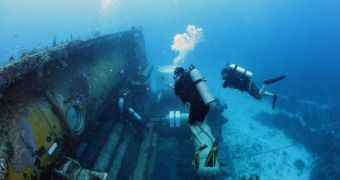Six aquanauts are currently living aboard the Aquarius underwater laboratory, which is located off Key Largo, in the Florida Keys National Marine Sanctuary. The experts are monitoring endangered coral reefs in the area, trying to determine how the react to global warming and ocean acidification.
Scientists and technicians alike have just begun a 10-day mission to the research facility. During this time, they will attempt to discover efficient methods of preventing the decay of corals, and maybe even reverse it by as much as possible.
Aquarius, a school bus-sized enclosure about 47 feet (14 meters) in length, has a surface area of about 400 square feet (37 square meters). The team members need to hurdle up in order to fit inside, but some of them are preparing to become astronauts, so this becomes a common practice.
The current crew descended aboard on September 13, and aquanauts have been carrying out science sorties ever since. Their goal is to create a framework of data around the corals located near the submerged marine laboratory.
Currently, marine biologists are very concerned about the fact that the pH level of oceanic waters is becoming more acidic, a phenomenon that leads to coral bleaching. What this means is that the microorganisms living on the reefs separate and move away due to the new conditions.
This also promotes the spread of invasive algae, which smother the corals, further damaging their health. As global warming becomes increasingly apparent, instances of such events will undoubtedly multiply, and authorities need to be able to mitigate those effects, Our Amazing Planet reports.
“I've been working for many years from the seaweed's 'perspective' – strange, I know, but true,” explains Georgia Institute of Technology marine ecologist Mark Hay, who is one of the scientists aboard the Aquarius lab.
“From this I knew which species were most susceptible to being eaten, how they defended themselves using chemical feeding deterrents, structures, adaptations [the seaweed had] to grow at night when fish herbivores were sleeping, but not who was making them disappear by feeding on them,” he adds.
Aquarius is small, “but the group here is a good one and we get to spend eight hours or more outside diving, which relieves the 'cabin fever' aspects,” the expert says. The underwater lab is owned by the US National Oceanic and Atmospheric Administration (NOAA).
“This is my third time using an underwater habitat – twice in Aquarius and once long ago in Hydrolab, a much smaller habitat – and the freedom to dive this much more then pays back the aspects of being unable to come to the surface,” Hay concludes.

 14 DAY TRIAL //
14 DAY TRIAL //